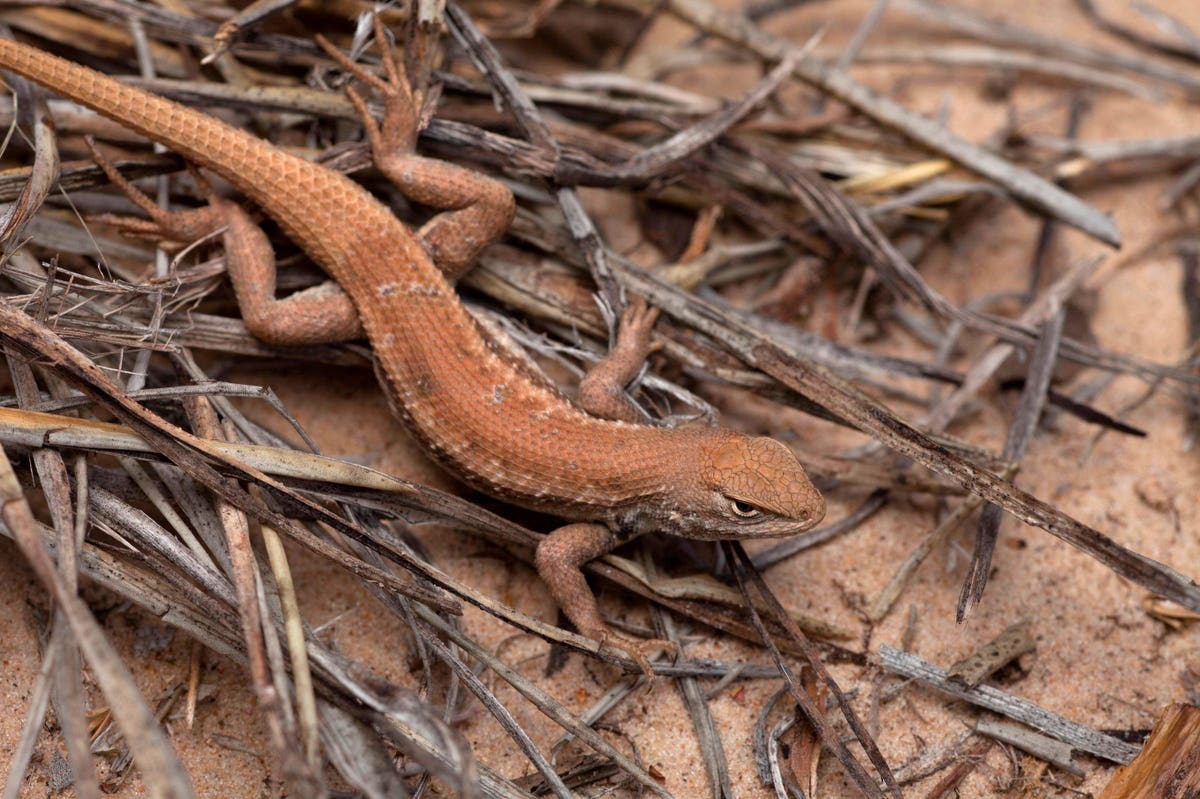As part of a massive, pre-holiday weekend document dump by the Biden administration on June 30, the domestic oil and gas industry received an unwelcome gift from the U.S. Fish & Wildlife Service (USFWS), one that shifts Mr. Biden’s continuing war on oil and gas to the Permian Basin. In a notice published in the Federal Register, USFWS said it has determined a need to list the Dunes Sagebrush Lizard, long a topic of concern and controversy, as an endangered species under the Endangered Species Act.
Though a day past deadline, the notice of proposed listing will presumably satisfy a court order requiring the agency to issue a decision no later than June 29. It also upends the conduct of a longstanding conservation plan related to the Lizard, agreed-to in the midst of the Barack Obama administration and most recently updated in 2020, the final year of the Trump presidency.
Ben Shepperd, President of the Permian Basin Petroleum Association (PBPA), expressed surprise at the decision in an email. “We are extremely disappointed in the U.S. Fish and Wildlife Service (Service) decision to again list the Dunes Sagebrush Lizard as Endangered in the Permian Basin,” Shepperd said. “In spite of the successful conservation efforts on the ground for over a decade and that less than two years ago approving a conservation plan for the Lizard that all parties agreed would conserve habitat.
“We are shocked and dismayed at this decision…announcing this before a national holiday is yet another tactic this administration likes to use.”
Tim Stewart, President of the U.S. Oil & Gas Association, was even more pointed in his criticism of the administration’s tactics. “Anti-energy activists have been desperate to shut down drilling in the Permian Basin for years,” Stewart told me. “The Obama Administration worked closely with State of Texas and local land users to put in place a conservation plan that has continued to work to this day. Texas oil and gas operators spent tens of millions of dollars in voluntary conservation efforts to protect the dunes sagebrush lizard. Environmental groups meanwhile added nothing to the conservation efforts but petitions and lawsuits.”
As reported by E&E Daily, environmental groups supporting the listing were predictably pleased. “I’m relieved the precious dunes sagebrush lizard is finally on the path to protection,” Michael Robinson, senior conservation advocate at the Center for Biological Diversity, said in a statement. “I’m saddened and disgusted, however, that the Service allowed the lizard’s habitat to be destroyed for decades.”
Complaints about tactics and time frames aside, both critics and supporters of the proposed listing will now have a 60-day comment period to present the arguments supporting their respective positions on the matter. For its own part, USFWS bases the rationale for the listing on claims of diminishing habitat for the Lizard caused by oil and gas operations.
“Even though these degraded areas may continue to support the dunes sagebrush lizard in small, isolated patches, the species in these areas has limited recruitment, has higher mortality, and is disconnected from other populations,” the Fish and Wildlife Service reported, adding that “the dunes sagebrush lizard is functionally extinct across 47 percent of its range.”
One section of the notice also includes impacts from “climate change” as a rationale for the listing: “(1) Habitat loss, fragmentation, and degradation from development by the oil and gas and frac sand (high purity quartz sand that is suspended in fluid and injected into wells to blast and hold open cracks in the shale rock layer during the fracking process) mining industries; and (2) climate change and climate conditions, both resulting in hotter, more arid conditions with an increased frequency and greater intensity of drought throughout the species’ geographic range,” the agency claims.
Importantly, USFWS goes onto state in its notice that “we find that the designation of critical habitat for the dunes sagebrush lizard is not determinable at this time.” Given that the Dunes Sagebrush Lizard exists across most of the Permian Basin, such a designation, which would likely be specified in a final listing decision, could become extremely limiting to any future development of the massive oil and natural gas resources known to exist beneath the region.
The Bottom Line
Make no mistake about it: This proposed listing is a real threat to the future development of the rich resources beneath the Permian Basin. Having apparently backed off from a nascent EPA trial balloon floated months ago about ruling the Permian region to be in non-compliance with ozone thresholds, it was perhaps inevitable that Biden’s regulators would pursue this specific listing, given its potentially wide-ranging impacts on the industry’s ability to get its business done.
If the goal is to kill a great American industry – as the President himself has often said that it is – this little lizard could become a very potent weapon.
Read the full article here





